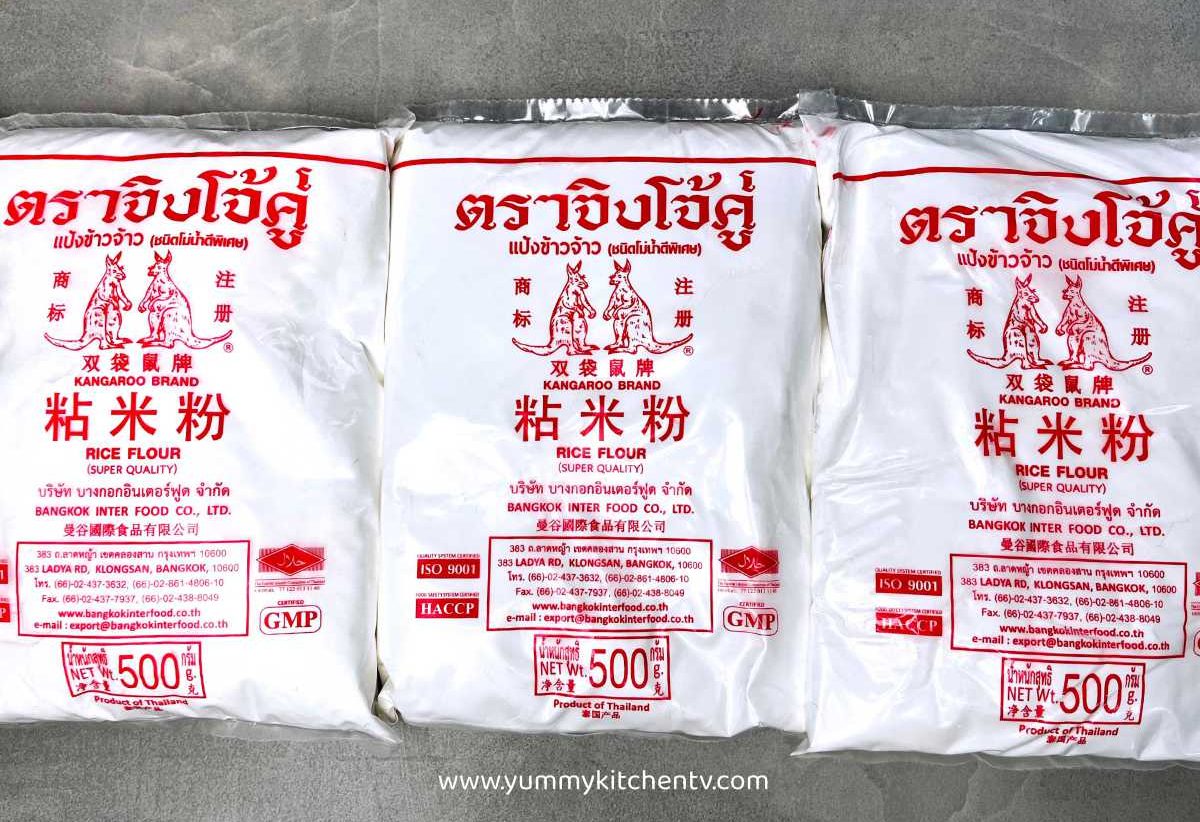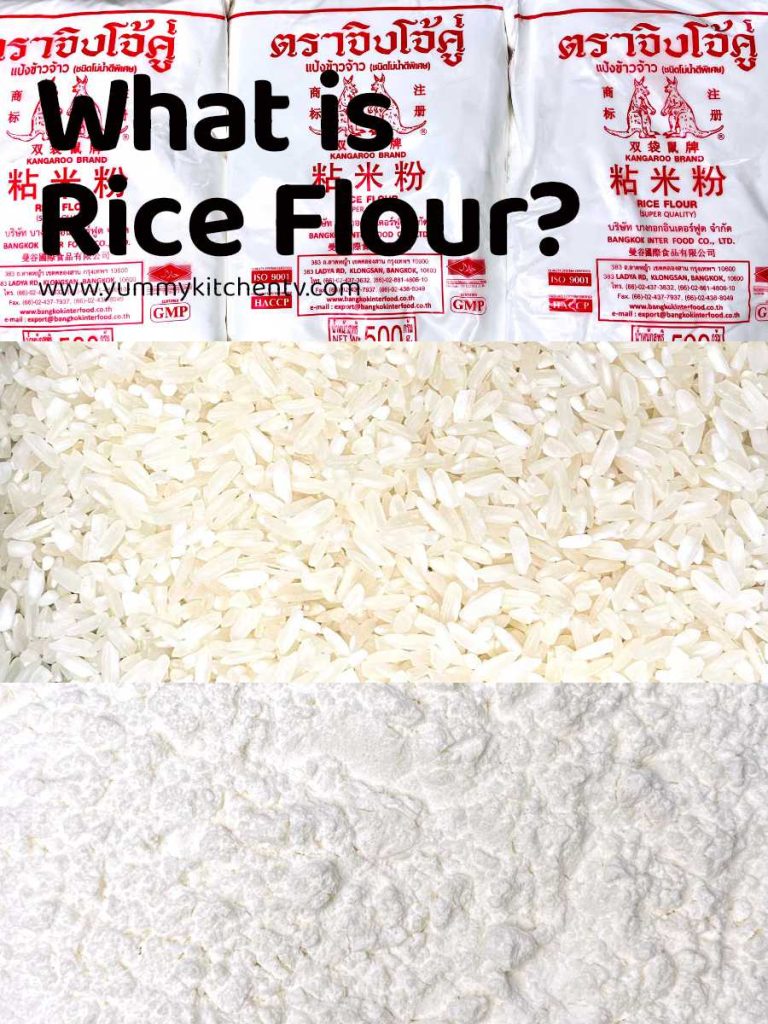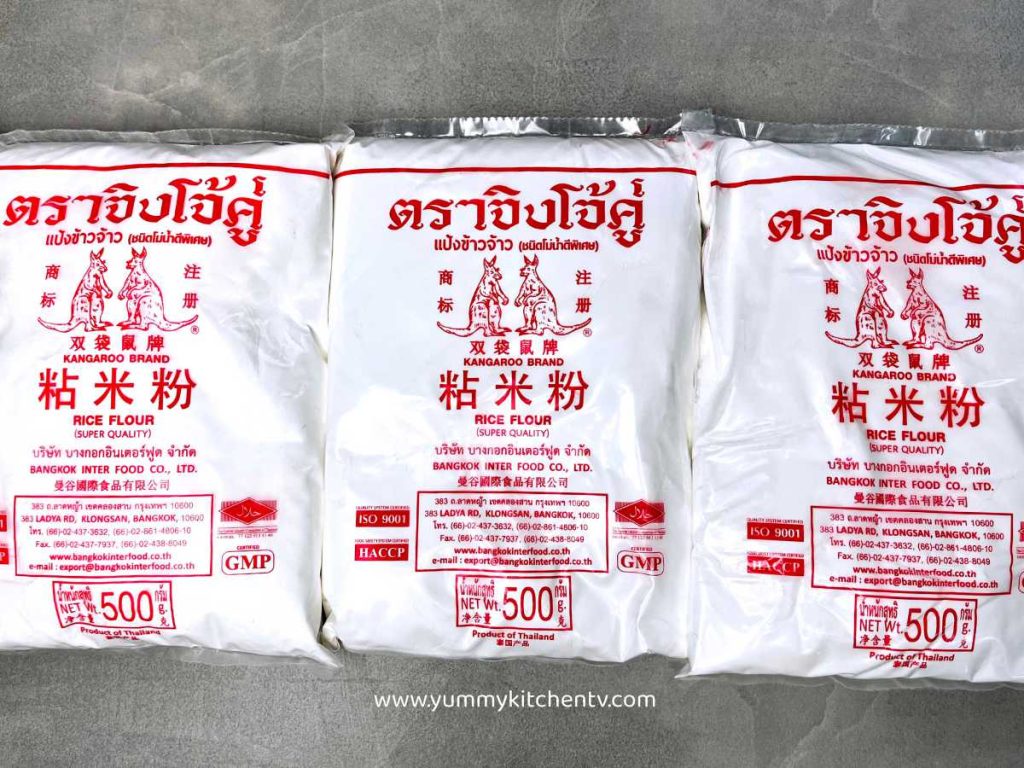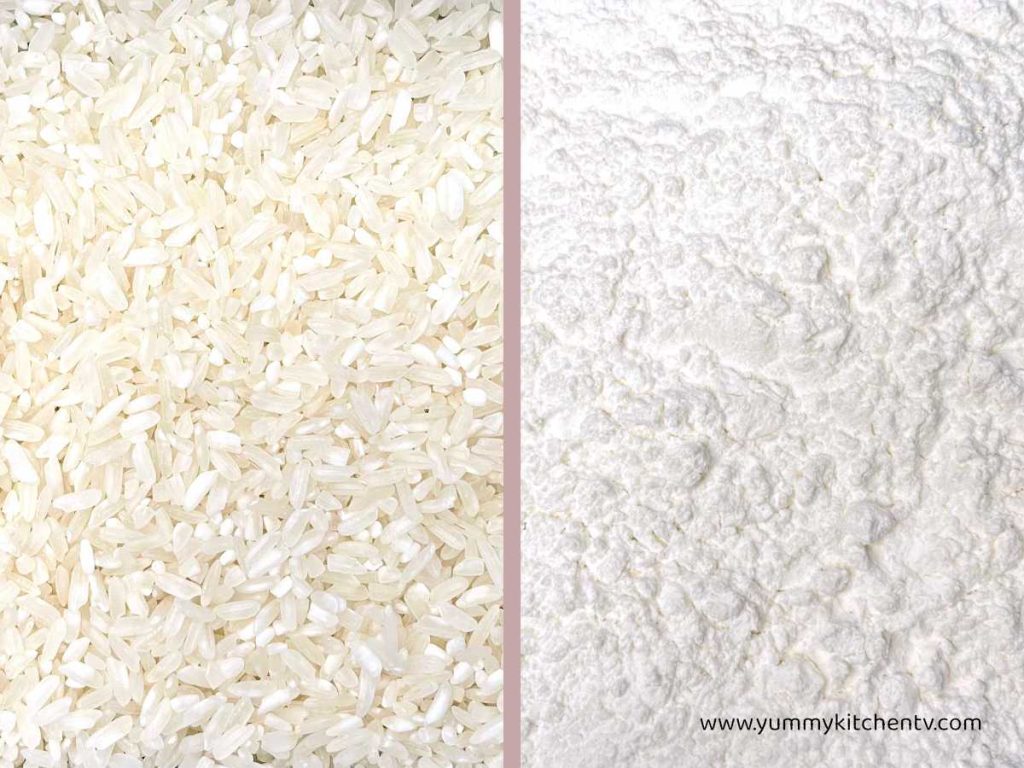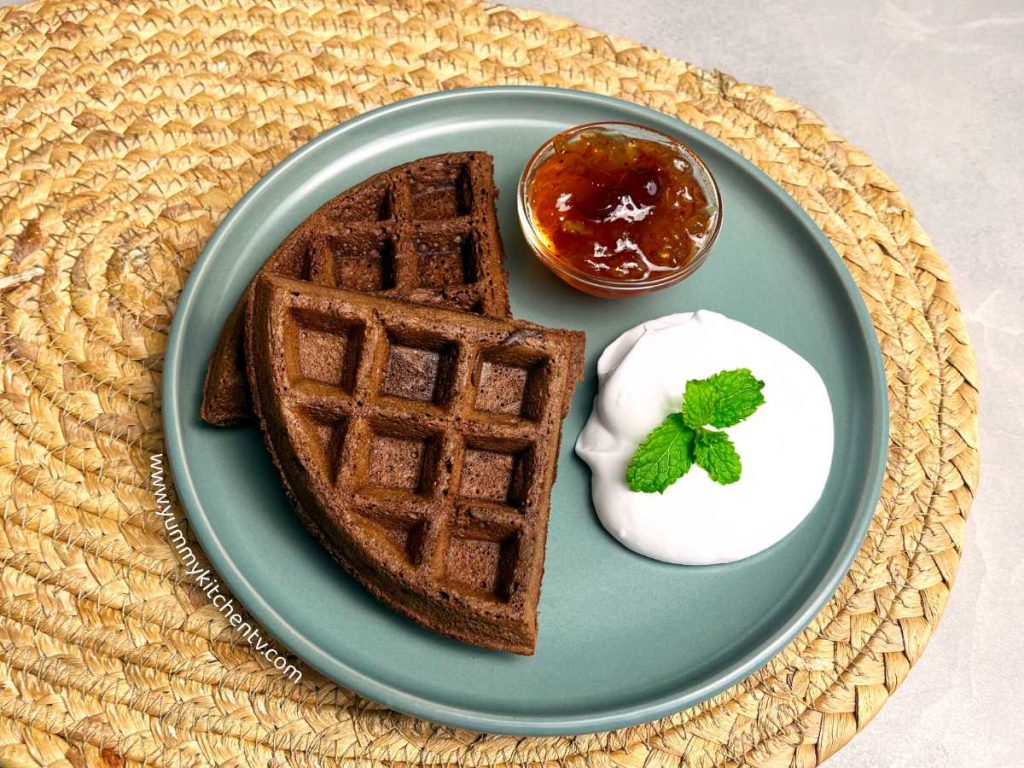Rice Flour is white or brown dry rice (uncooked rice) finely milled into powder. Not to be confused with rice scratch that has an added step of using lye to step rice. Used in many traditional main dishes and desserts in Asian cuisine, used as a thickening agent, for frying, and in the past few years, a common gluten substitute to wheat flour. Meaning it might need more additional ingredients to keep up with the needed gluten structure to create baked goods. A great on hand type of flour with many uses and are in a way ‘healthier’ than other choices.
A short introduction
The plant is a staple in most Asian countries, mainly India, China, and Indonesia, and recently found in South America, North America, and some parts of Africa. There are many choices of white rice to be used, depending on the brand or country it could be wild rice, japonica, or indica, or a mix of these. Where to buy rice flour? You can find them in many regular grocery stores or Asian specialty stores, some even in dry markets.
This type of flour is finely milled or grinded white rice or brown rice with the husks removed. Used in many gluten-free baked goods or as commercial dusting powder in many baking operations. This brown or white rice type of flour can be interchangeable to each other as both have a mellow neutral flavor, white to a light brown color, hypoallergenic, and can be easily digested by the body. The flour is produced by a cereal plant called ‘Oryza sativa’ which has grains that have the length of 6 – 7 millimeters for long grains, 5 – 6 millimeters for medium grains, and more or less 5.5 millimeters for short grains. Rice flour starch content is found to be 71 to 91%. Specifically, rice flour chemical composition comes to 12.88 to 12.08% of moisture, 0.55% to 0.39% ash, 6.48 to 5.96% protein, and 0.55 to 0.39% fats. Do note that rice ‘powder or flour’ is different from rice starch which is made by steeping rice in lye.
All flour made from the grains do not obtain gluten thus cannot form the elastic texture that one would when using bread or all purpose flour that helps with keeping the gas in the dough to keep them fluffy. While one can still make “rice flour bread” this might lack fluffiness after a few days and would need to be reheated to regain some of the softness. The bread made from this type of flour will also not last as long as the typical bread and would need to be refrigerated or kept in the freezer, thawed when needed. There are many other uses of this gluten-free flour, from being used in traditional rice cakes, ‘tteok’ or Korean rice cakes, the Filipino snack puto, of Japanese mochi, to other gluten-free baked breads and pastries, desserts like macarons or macaroons and cakes to brownies, batter for frying, you can find them being used dusted over normal doughs or baked goods to prevent the dough from sticking to other doughs or to the bottom of the pan. There are even some cases of the rice water or the grinder powdered rice being used to create natural or factory produced skincare as rice flour properties help with creating a healthier, wrinkle free, brighter and well toned skin.
How to make rice flour at home instantly?
- How to make rice flour without a grinder or blender :
- Wash the rice, straining and repeating till the water turns almost clear.
- Let it soak in warm water for 30 minutes overnight.
- Strain and spread it over a baking tray or any area to let dry. (to avoid turning into paste)
- Once fully dry you can use a mortar and pestle to grind. Grind in batches.
- Keep in an airtight container and store in cooler areas.
- How to make rice flour with a blender or grinder:
- Similar to the above but use a grinder or blender. Blending these by batches.
- Do note that you should let the blender rest for a while if it reheats as it might damage both the blender and rice.
Rice flour benefits:
What is can this type of flour used for aside from using these into baked goods and other dishes?
- Great for those with Celiac disease (those who cannot consume gluten/ gluten intolerance).
- Fibrous rice essentially is a good source of dietary fiber that reduces risks of problems like cardiac and digestive problems.
- These like rice are calcium and protein rich which is great for bone health and even muscle building.
- Beneficial to the Liver, it has ‘choline’ , which is a nutrient compound that transports the lipids around the body to help support the liver.
- A natural exfoliant, topically it can be used as a scrub for skin care to reduce dark under eyes, help make a brighter and clearer skin and face. (find out how to make a rice flour face mask below)
Questions:
- Does rice flour have gluten? No these do not.
- Rice flour substitutes? These can be interchanged with glutinous rice flour, almond flour, oat flour, tapioca flour/tapioca starch, potato starch/potato powder, cornstarch, cake flour, and the all purpose flour. Though the outcome can turn out crispier or sticker than most depending on the alternatives are used.
- Rice flour vs glutinous rice flour? Glutinous rice flour also known as ‘sweet rice flour’ is also gluten free and is used interchangeably with regular rice powder the outcome does come out sticker or chewier. Glutinous rice is made from long grain sweet rice, a more dessert type of sticky rice, while the common rice powder uses regular rice you can find almost anywhere or you usually eat as a companion of a savory meal.
- How to make rice flour at home for the face?
- Mix a table spoon of rice and oat flour or sugar with a tablespoon of water or honey.
- Once it turns into a paste apply all over the face or only in the problem areas.
- Let it sit and dry for 5 to 10 minutes (do wash off immediately if it becomes too itchy).
- Rinse off with warm water then cold water.
- Moisturize with your usual routine.
This can help with skin concerns like dark circles, acne, blemishes, keeping the skin bright and slowing down signs of aging like wrinkles and elasticity. This is due to its anti-aging and antioxidant properties.
* Do note while it is used daily by some it is more so recommended to be used only every other day or only 2x a week. Depending on how sensitive the skin is.
How is it made in the Philippines?
There are different grinding or milling methods. Typically the rice is grinded after these have dried and the husks are removed. Some are wet-milled or moistened with water before milling, grinded in a factory or stone milled by machine or by hand. After these are squeezed to remove the moisture then stored in the freezer. In the Philippines one does use this flour for the ease of baking and cooking traditional dishes as you can find it in most grocery stores big or small. The more traditional way of the rice ‘flour’ base is to soak glutinous rice overnight to ferment then grind by using a stone mill, or modernly a blender. Grinding or blending the rice till it becomes ‘galapóng’ or fermented rice dough/rice batter to be used in ‘kakanin’ or ‘rice dishes’ like bibingka, puto and many more traditional rice cakes.
Rice flour recipes:
- Rice flour recipes Filipino dishes:
- No Oven Bibingka (a fluffy Christmas favorite Filipino rice flour cake recipe)
- Puto Flan (mini fermented rice cakes)
- Palitaw with Yema Filling (flat rice cake filled with the filipino version of dulce de leche)
- Buko Pandan Palitaw balls (circular rice cake flavored with buko pandan)
- Black Kutsinta (a brownish sticky rice cake that taste almost like tapioca pearls)
- Puto Bumbong (without bamboo tubes) (a traditional purple rice cake)
- Rice flour pancakes

